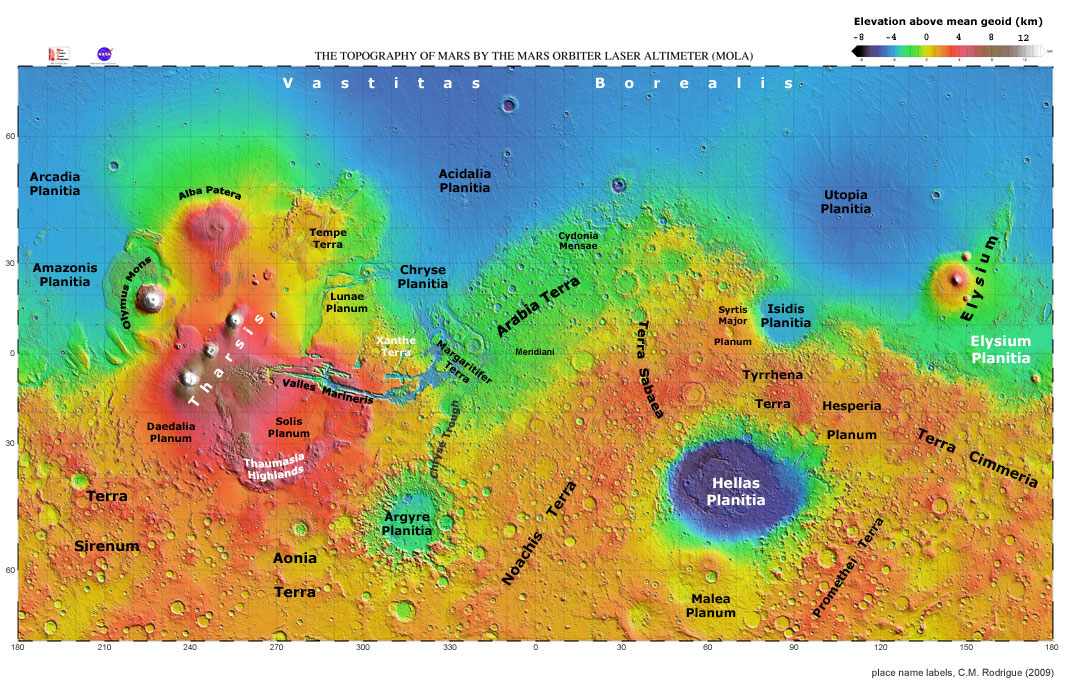@farmerman,
With .38 G, you're going to get some serious standing waves. You need a better knowledge of the "geography" of Mars. (By the way, my earlier statement that Echus Chasma and Kasei Valles are on the northwest side of the Tharsis Plateau is incorrect--they are on the northeast side.)
This was the best map i could find with a quick search:

Where it says "Lunae Planum," the green elevation area to the west is Echus Chasma. JPL states that it is clay at the lowest levels, suggesting there was once standing water there. The green elevation area makes a sharp right turn just south of Tempe Terra, and that's Kasei Valles. If Echus Chasma once were filled with water, Kasei Valles is the path by which water would have drained into the Oceanus Borealis, a northern ocean hypothesized to have existed during the "warm, wet period."